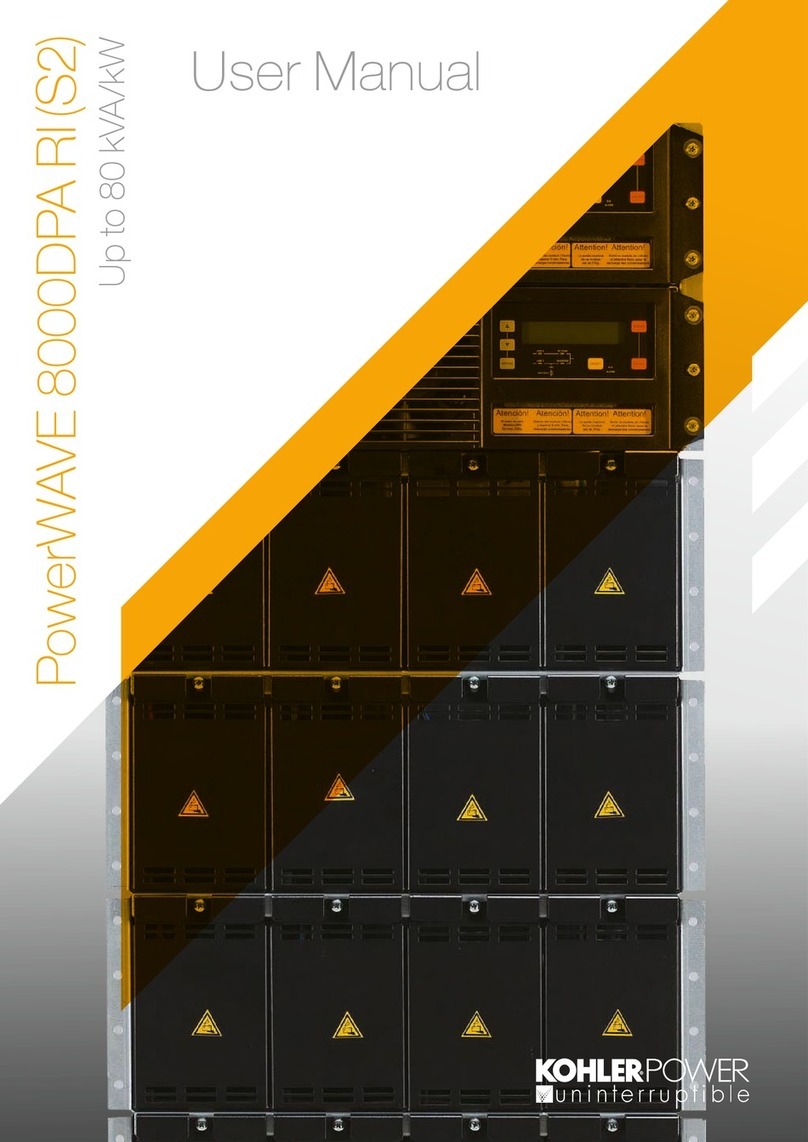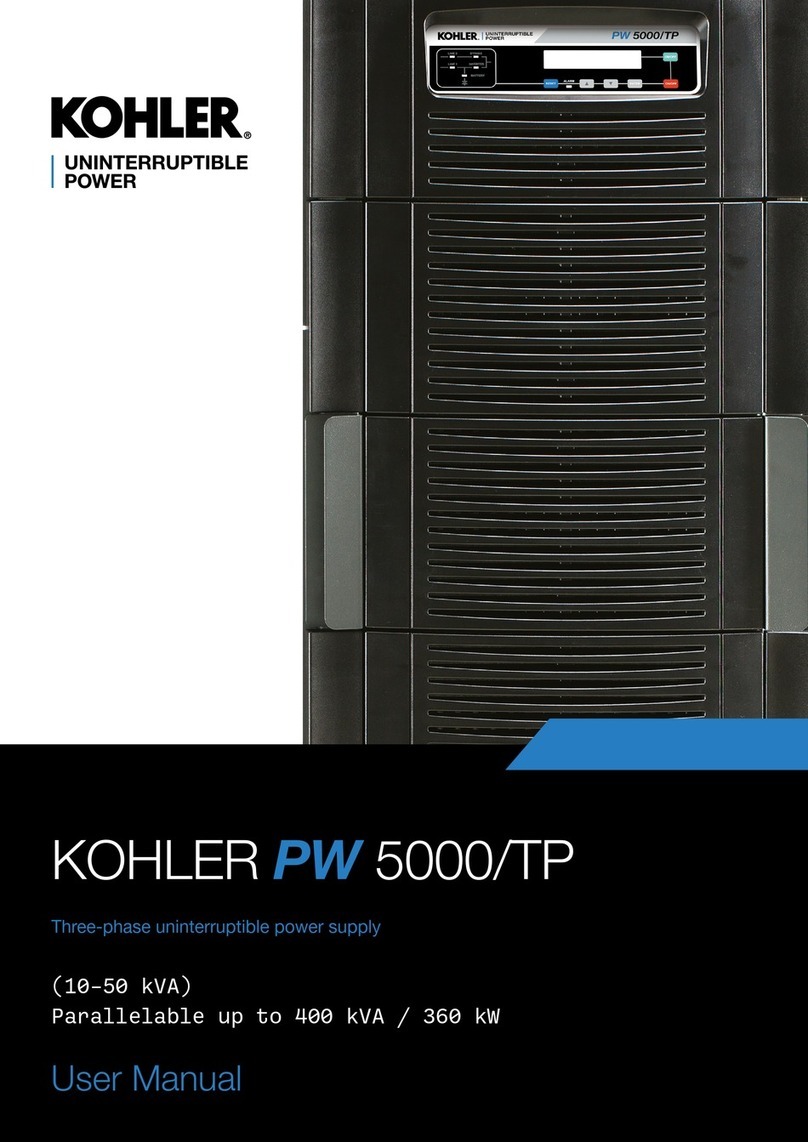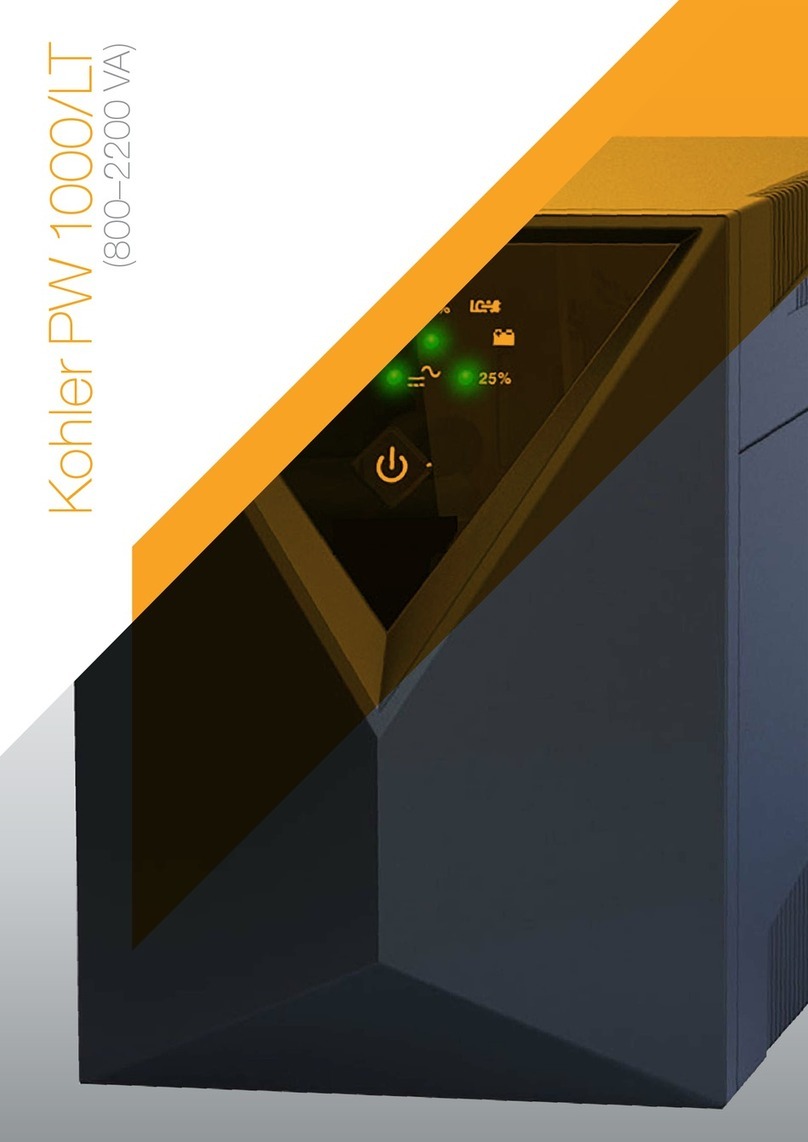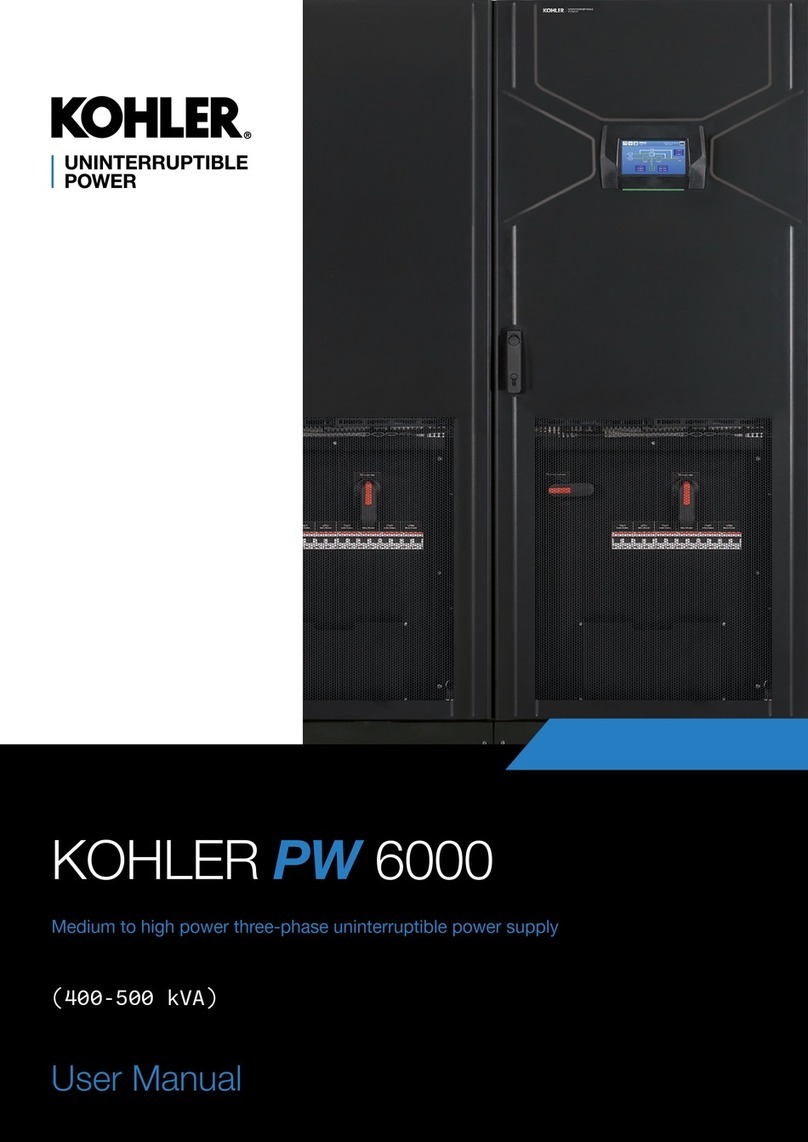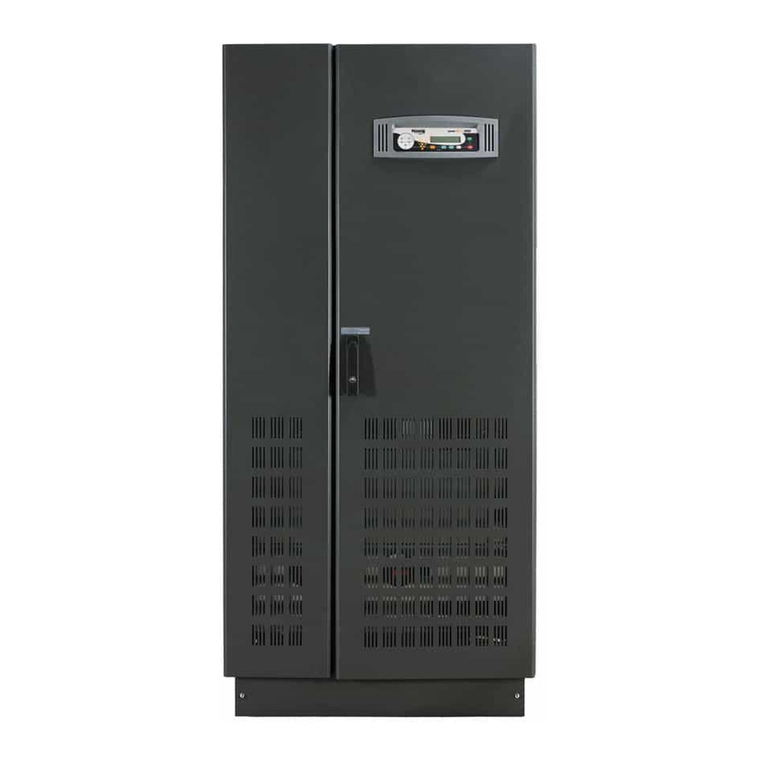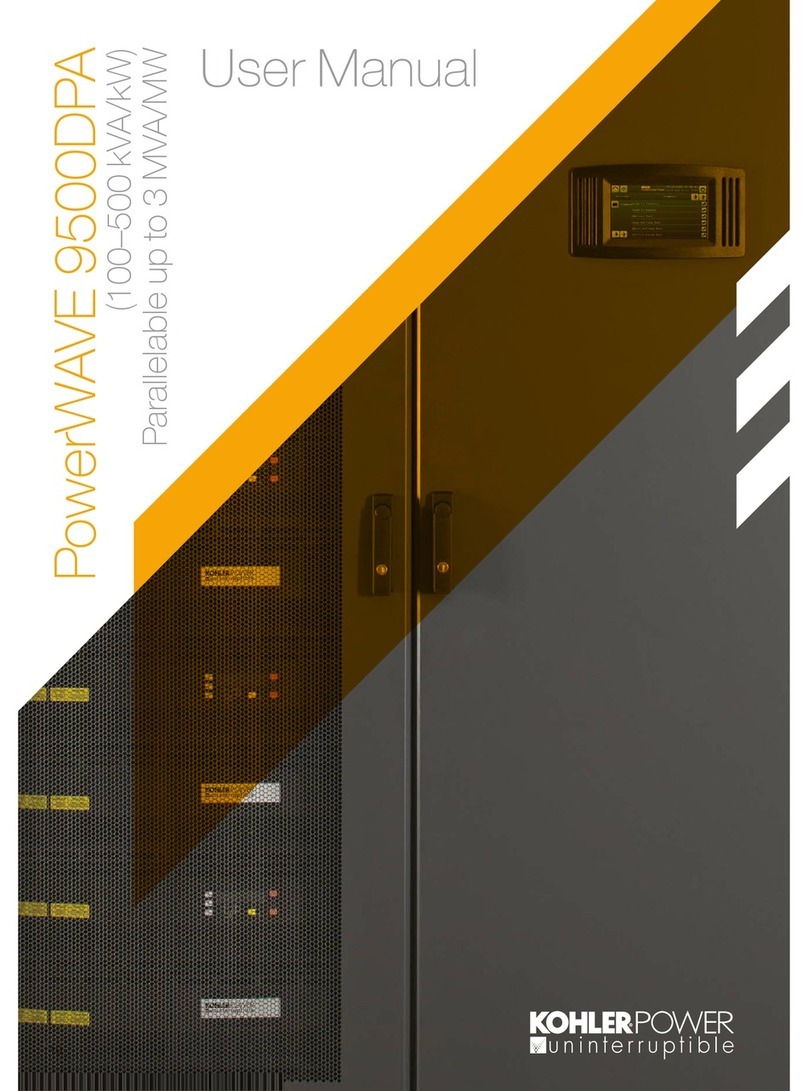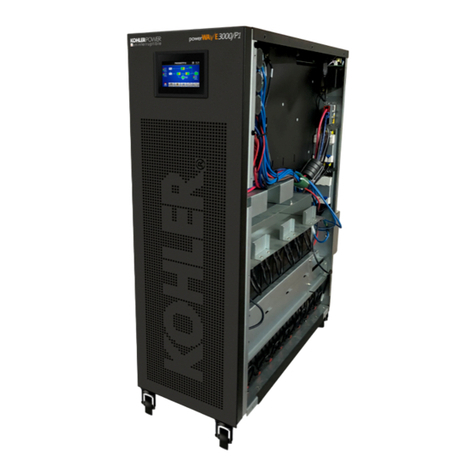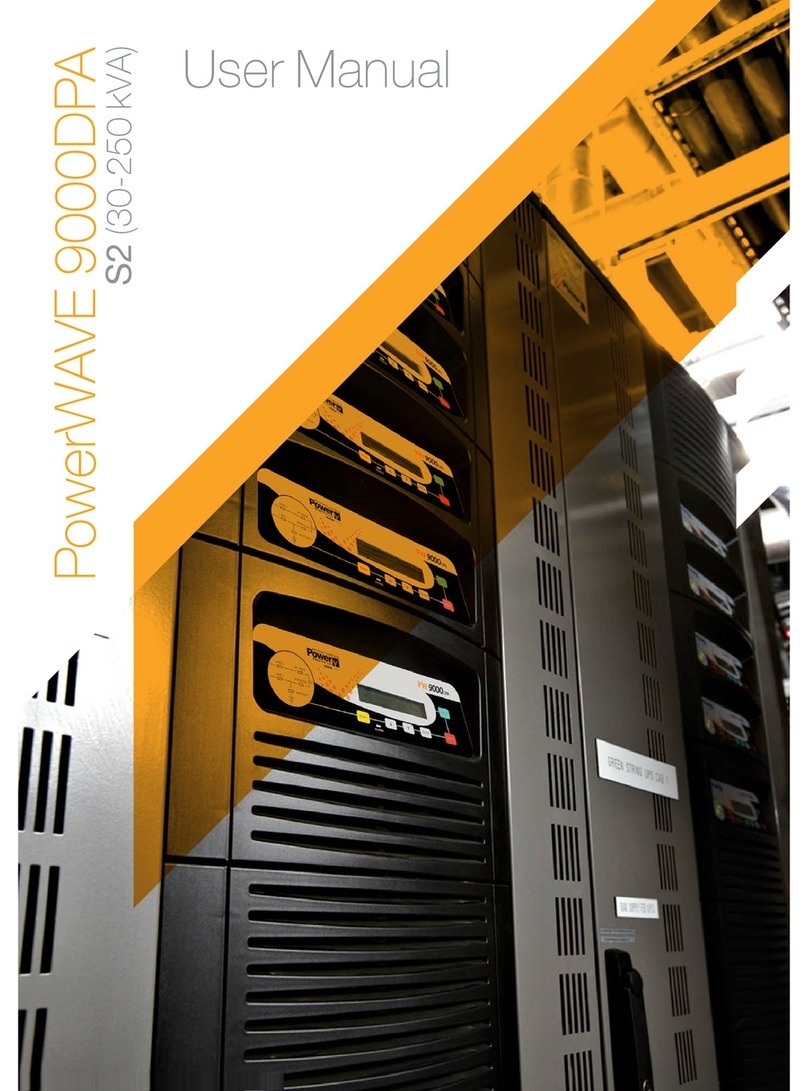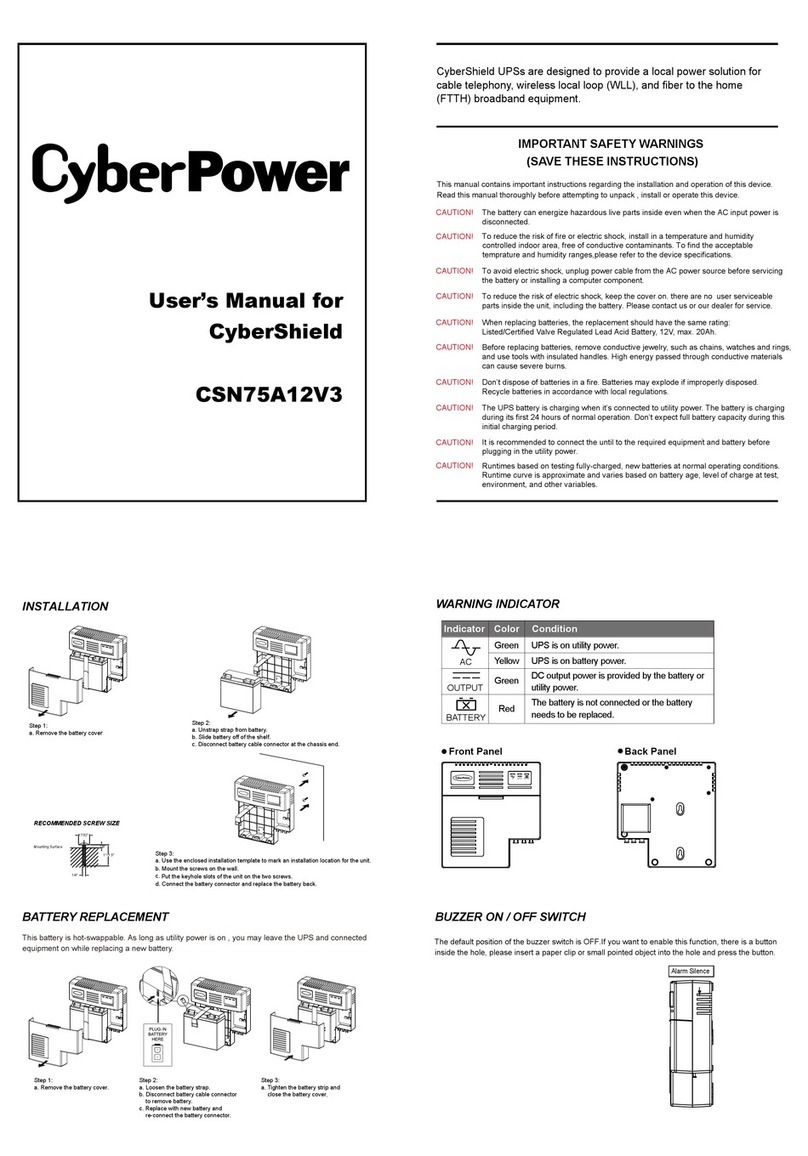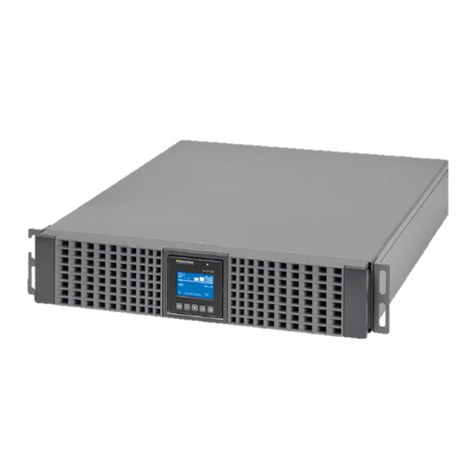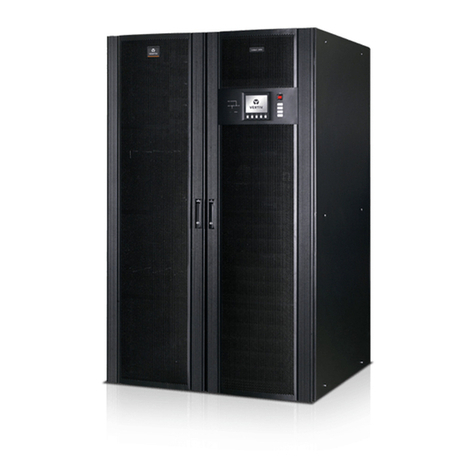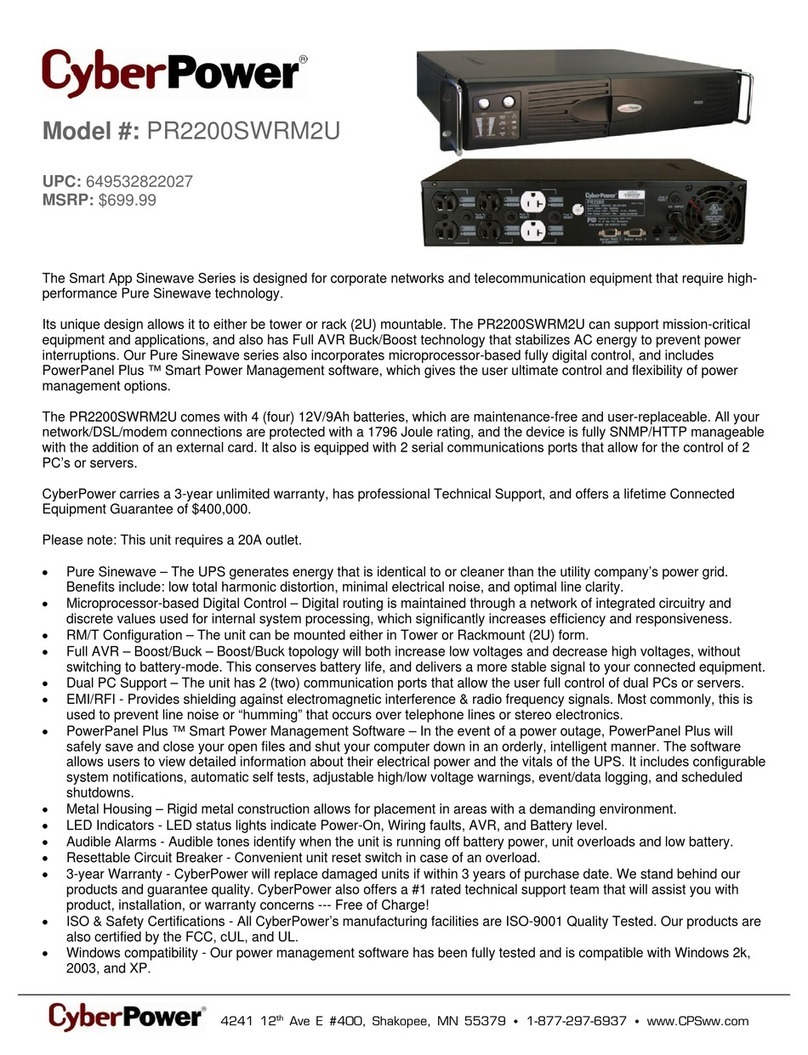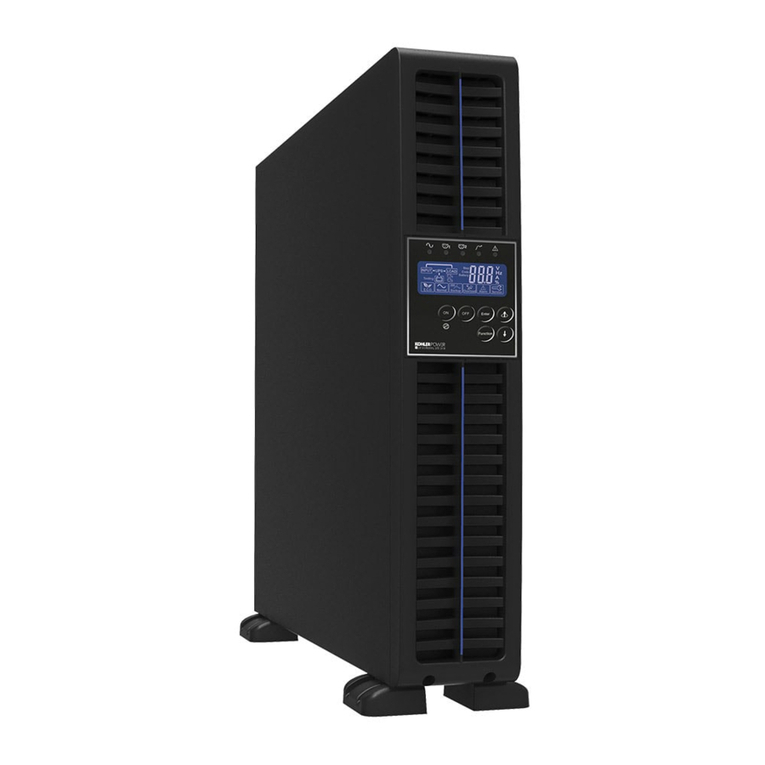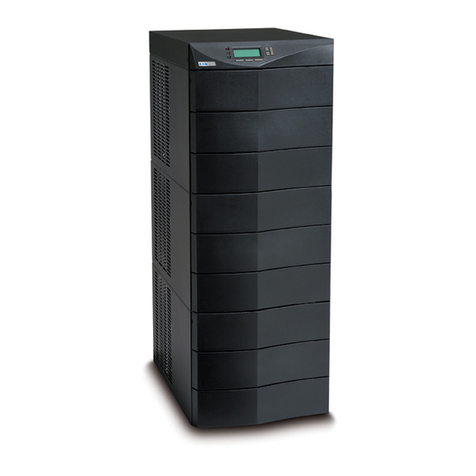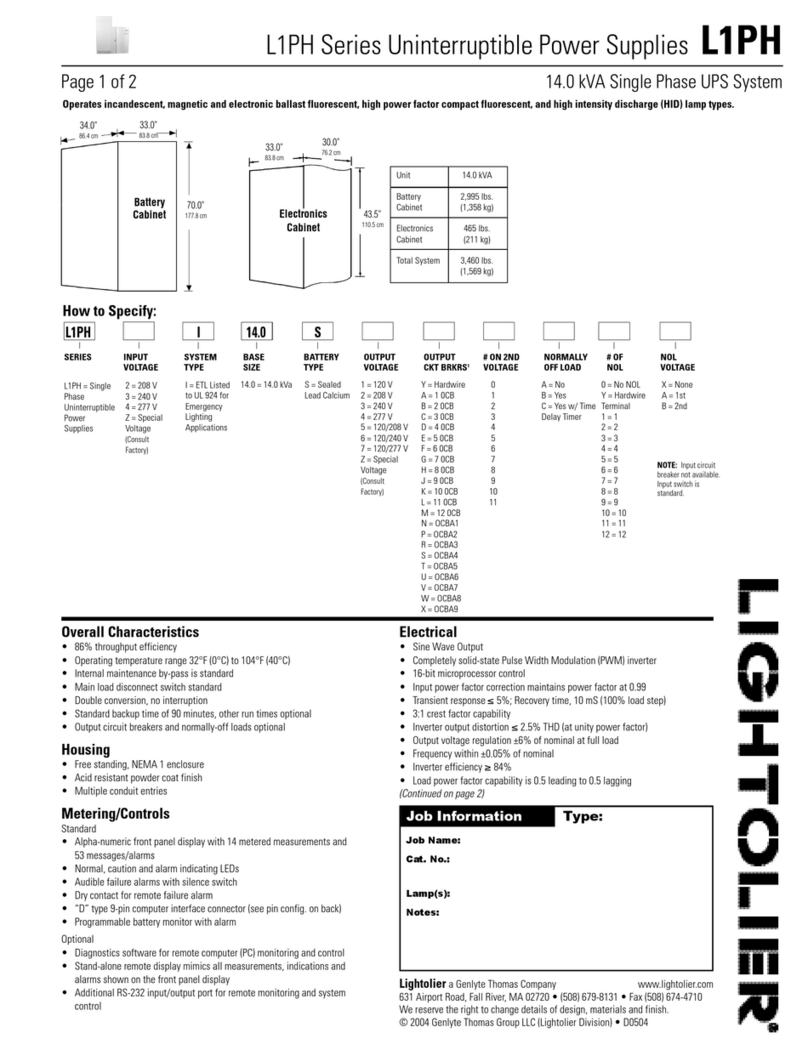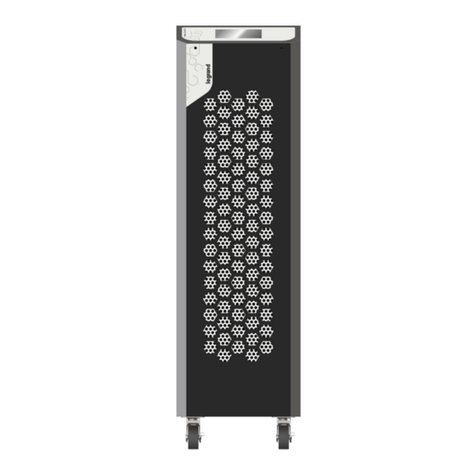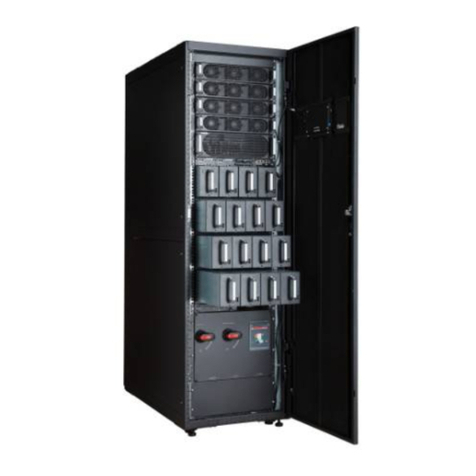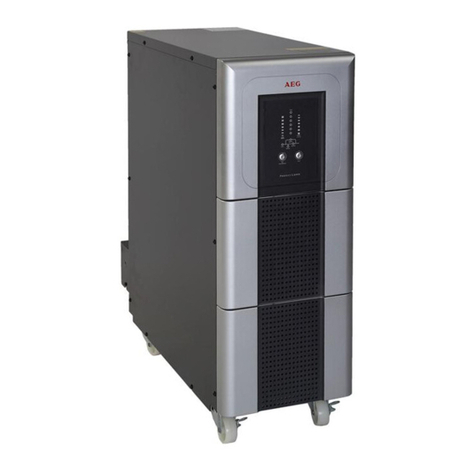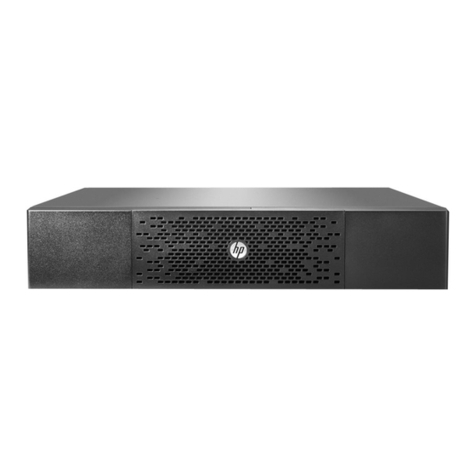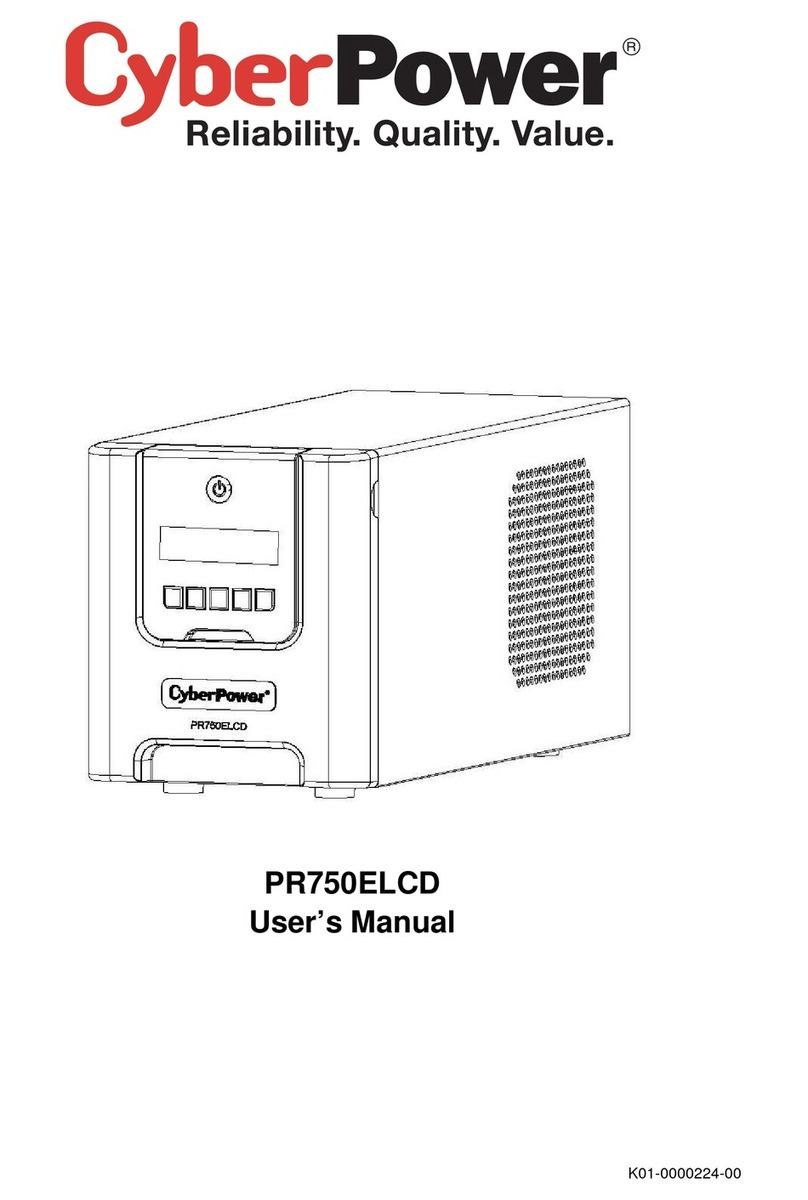2: General Description
6TS_616_03 PW8000DPA ST S2 User Manual 4/4/18
UPS ON-BYPASS mode
This mode can be selected by the operator as part
of the system operating procedure. It is also
entered following certain fault occurrences such as
a UPS output overload:
• The load is connected to the raw mains
input supply through the bypass arm of the
static switch.
• The rectifier and inverter remain powered
up and in operational readiness to be
brought into use.
• When operating in this mode the load is not
protected against any mains input supply
disturbances or loss.
2.2.3 UPS system operation
Summary of UPS module operating modes
UPS installations are generally categorised as being either ‘ON-LINE’ or ‘OFF-LINE/On stand-by’ systems; and the
PW8000DPA ST S2 can be configured to operate in either mode. The two systems are described below.
ON-LINE UPS system
An ‘ON-LINE’ system provides the highest degree of load protection, especially in the event of a mains supply disturbance
or complete failure, and we always recommended its use if the critical load (e.g. computer system) will not tolerate even a
very brief supply interruption.
When the PW8000DPA ST S2 is used as an ‘ON-LINE’ UPS it is configured to normally operate in the ON-INVERTER
mode, as shown in Figure 2.3. In the event of a mains supply failure, the UPS changes to its ON-BATTERY mode (Figure
2.4) without affecting its output supply – i.e the changeover to battery operation is totally transparent at the UPS output.
The UPS then continues to provide its rated output until the battery discharges to a low cut-off point, at which time the
UPS will attempt to switch to its ‘on bypass’ mode and, if the bypass is unavailable, then it will shut down in a controlled
manner. An audible and visual alarm will warn that the battery is discharging to enable the operator to take any necessary
intervention to protect the load integrity.
It is usual, especially in larger installations, to provide the UPS with an alternative input supply from a standby generator
which starts automatically following a mains supply failure; and where this is implemented the batteries discharge for a
short period only, until the generator comes on-line. This not only avoids the UPS shutting down due to discharged
batteries but also increases the battery life cycle.
If the UPS experiences an internal fault during ON-LINE operation, the inverter is turned off and the static switch transfers
the load to the bypass line (Figure 2.5) automatically and without interruption provided the inverter and bypass supplies
are synchronised. In the event of an output overload, the inverter can supply the load for a limited time, depending on the
overload severity, and if the permitted time is exceeded the load is transferred to bypass. The additional power available
from the bypass supply will attempt to clear the overload but if it persists it will ultimately rupture the bypass supply fuses.
If the overload condition clears while operating on bypass the load is re-transferred to the inverter and the UPS will return
to its normal ON-LINE mode of operation.
OFF-LINE (On stand-by) UPS system operation
When the PW8000DPA ST S2 is used as an ‘OFF-LINE’ UPS it is normally operated in its ON BYPASS mode (Figure 2.5)
with the load supplied via the bypass line. However the rectifier, DC boost converter and battery charger are still powered
up to maintain battery charging, and the inverter section is turned on and operating on standby.
In the event of a bypass supply failure, the inverter is immediately brought on line and the load is transferred from the
bypass line to the inverter by the static switch within 3 to 5 milliseconds. If the UPS bypass and mains inputs are
connected to separate sources and the mains supply is still live when the transfer takes place then the UPS will operate in
its ON-LINE mode (Figure 2.3). However, if these supplies are connected to a common source the UPS will immediately
revert to its ON-BATTERY mode (Figure 2.4).




















